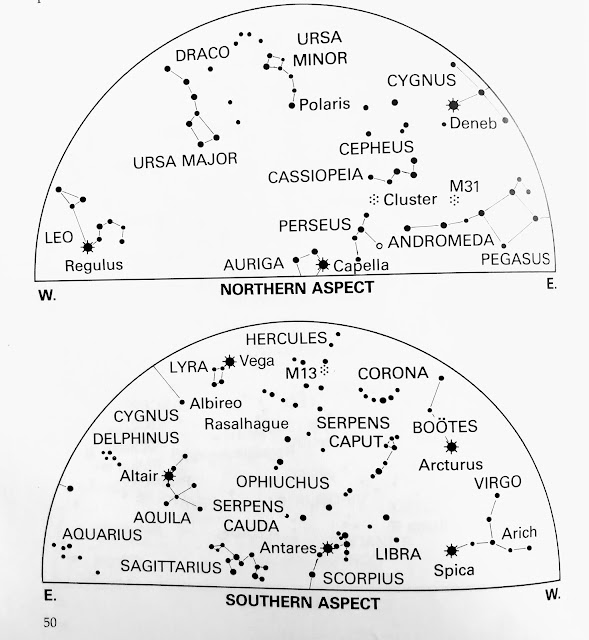Night Sky IV
The Great Red Spot on Jupiter is a huge storm known to have raged for 150 years. The Spot is the size of the earth. The picture is from a recent Sky at Night magazine which I got from Anne as a Christmas present. The magazine is a celebration of the 30th anniversary of the launch of the Hubble Telescope without which such a beautiful sight would be inaccessible to us. Hubble has literally brought space down to earth for us all, provided an incentive for amateur astronomers like myself and so embellished astronomy magazines they are suitable as Christmas presents!
A recent Sky at Night magazine celebrates thirty years of discovery by the Hubble Telescope. Through Hubble, confirmed by a 2015 fly past, we lost a planet. Pluto was discovered in 1930 and named ninth planet from the Sun. Discovery of similarly sized objects in the Kuiper belt led to its renaming as a ‘dwarf planet’. Conversely Hubble helped reveal a major component of the universe. ‘Dark matter’ accounts for around 85% of the matter in the universe and about a quarter of its total mass. Hubble helped reveal this by observations elsewhere since this material does not interact with electromagnetic fields.
We tend to think of the greatest human achievements as being like those visible from space such as the Great Wall of China but surely the launch into space 30 years ago of the Hubble telescope ranks with the moon landings for the impact it had on earth’s view of the cosmos. We owe to it a fairly confident estimate of the age of the universe, 13.7 billion years. Before Hubble our view of the universe was limited by human perceptions of space and time which this instrument has transformed. Hubble’s low earth orbit allows it to be maintained in space by astronauts. The picture is from a recent ‘Sky at Night’ magazine celebrating Hubble’s 30th anniversary.
This awesome picture is from a recent Sky at Night magazine and was originally released 2013 from the Hubble Telecope. The photograph is of the Horsehead Nebula rising ‘like a seahorse out of rolling waves of gas and dust. This image reveals the nebula in infrared light, piercing through the dusty material that normally obscures its inner regions’. One of the motivators for launching a space telescope 30 years back was to escape the obstruction earth’s atmosphere provides, even on a clear night, to astronomical observation, especially detection of sensitive information carried through space by infrared radiation as in the picture..
Looking back 30 years to the Hubble telescope’s launch a recent Sky at Night magazine provides this helpful biography of Edwin Hubble (1889 – 1953), American astronomer who played a crucial role in establishing the fields of extragalactic astronomy and observational cosmology. Hubble’s name was chosen for the 1990 telescope as one who ‘overturned the view at the time that the Universe consisted entirely of the Milky Way. He made this breakthrough by showing that Cepheid variable stars could be used as yardsticks to measure celestial distances, and finding several spiral nebulae too far distant to be part of our galaxy. This discovery totally changed our awareness of the cosmos’.
This picture from a recent Sky at Night magazine illustrates the funeral plan for the Hubble telescope (1990-2020) due to descend to earth most likely around 2038 but no earlier than 2027. No one is in a hurry to speed our bright eye upon the universe home but that journey cannot be left to gravity alone. Hubble’s crash to earth will be a great loss to astronomy but astronomy has to ensure that crash occurs in the Pacific ocean well away from human habitation. In 2009 the soft capture mechanism illustrated was installed on a last shuttle service so a robotic vehicle of some kind can dock with Hubble ‘and execute a final kamikaze dive into our atmosphere’.
Before the clouds descended over the weekend, I enjoyed the clear sky on Friday night with a crescent moon alongside the planet Mars. The dashed line on my Sky Guide App is the so-called ecliptic which is the apparent path of the sun, moon and planets across the sky. The bull represents the Taurus constellation which includes the orange star Aldebaran, close by chance to Mars on Friday, and the Pleiades star cluster which is a great sight through binoculars. We stargazers have to get out on cloudless nights away from the full moon, a limited yet glorious pursuit to be even more limited as nights grow shorter now it is spring.




Comments
Post a Comment